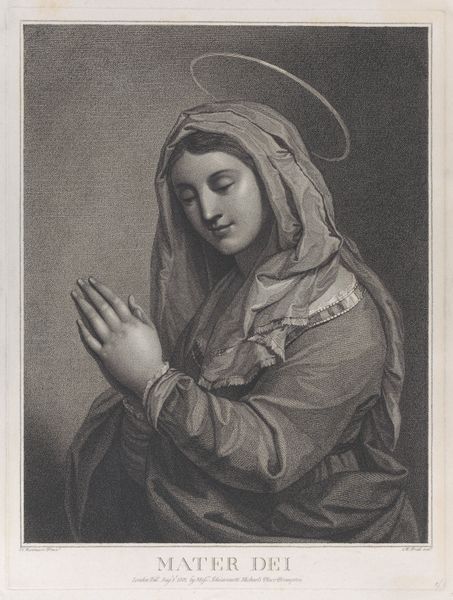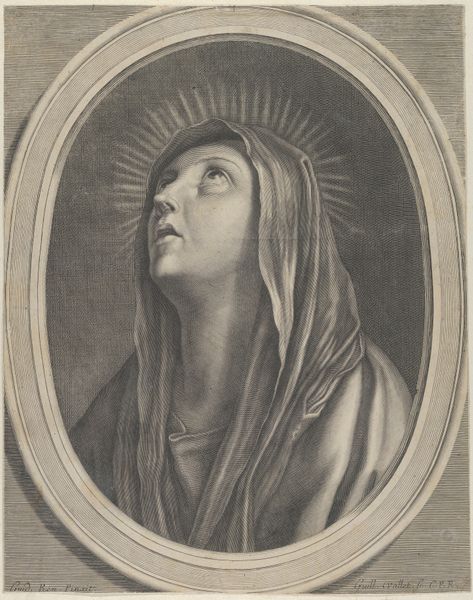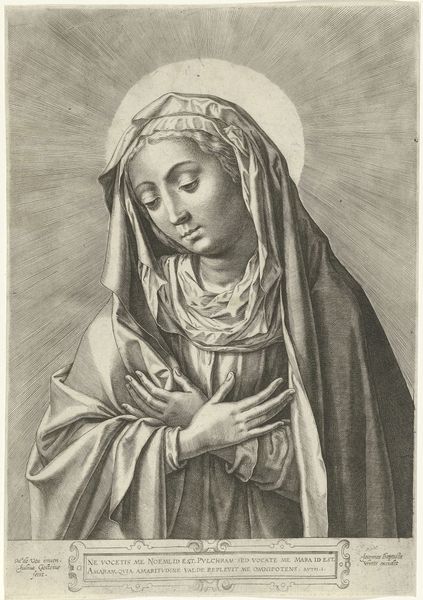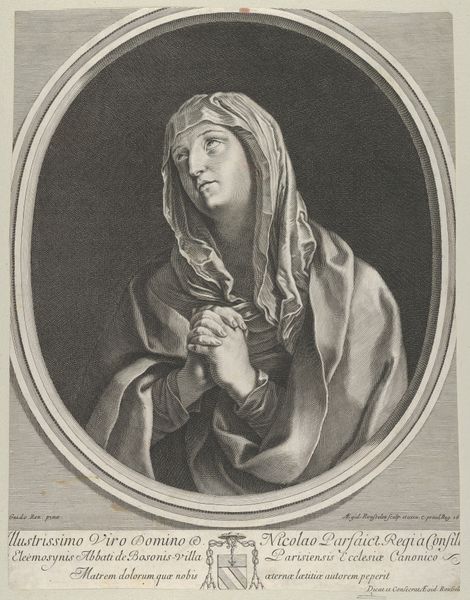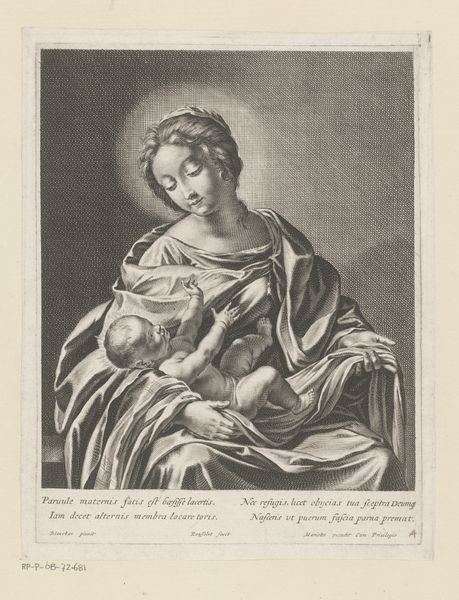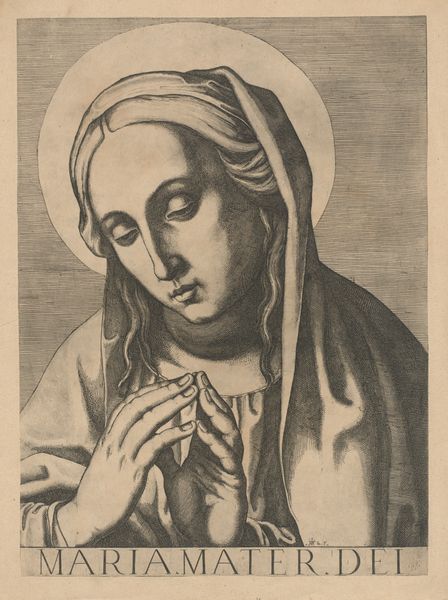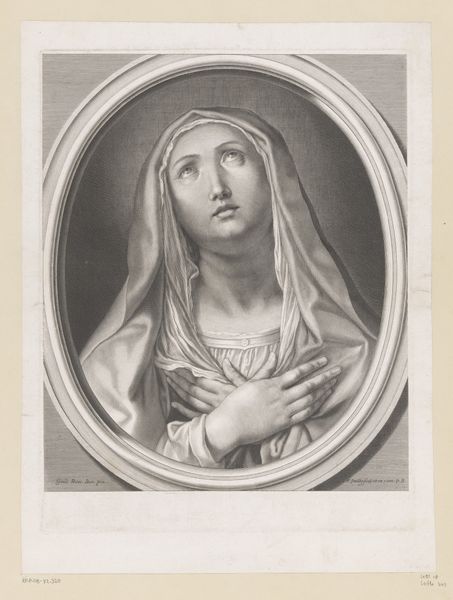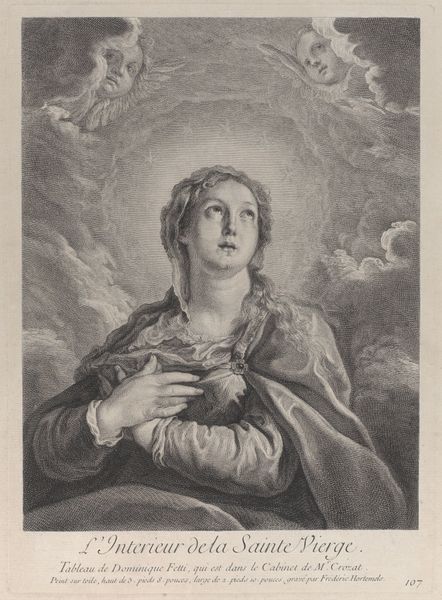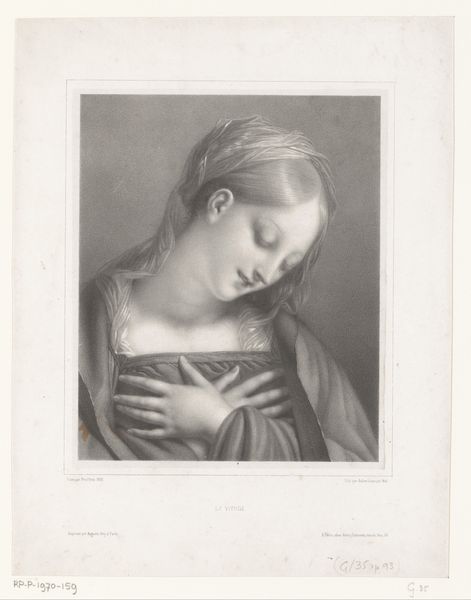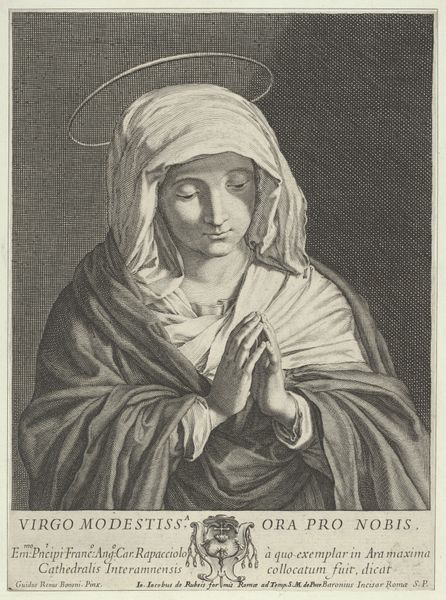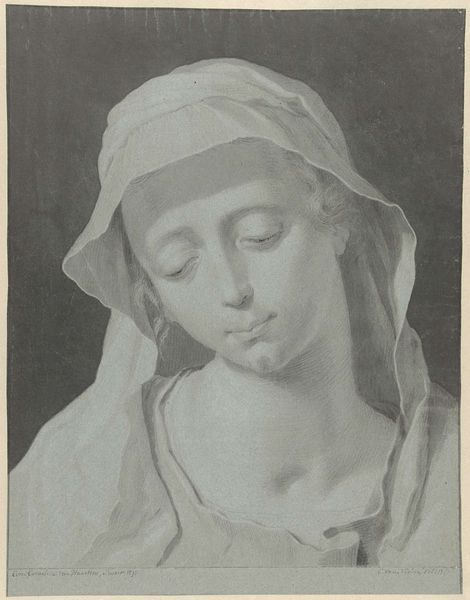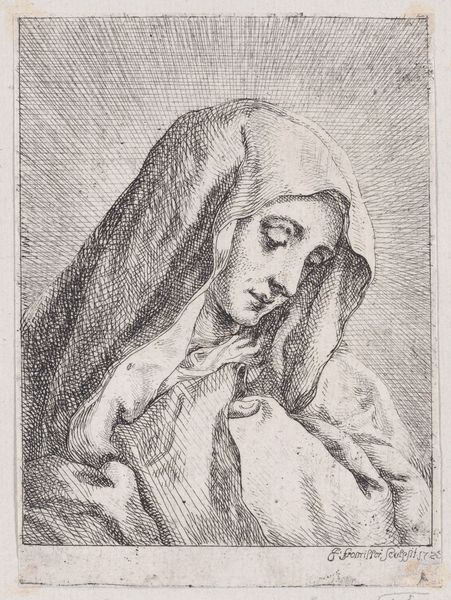
intaglio, engraving
portrait
baroque
intaglio
chiaroscuro
line
engraving
Dimensions: height 434 mm, width 324 mm
Copyright: Rijks Museum: Open Domain
Editor: So, this is Giovanni Marco Pitteri's "Maria," made sometime between 1712 and 1786. It’s an intaglio engraving, and I find its subdued tones and the downward gaze of the subject quite… melancholic, almost reverent. What do you see in this piece that perhaps I'm missing? Curator: It is interesting you see melancholy first. To me, it immediately speaks to the pervasive visual language of the Baroque. This wasn’t just an aesthetic; it was a tool. Look at the use of chiaroscuro. It does evoke a somber mood but more importantly, it creates dramatic intensity. It isn’t sadness for sadness’ sake; it is part of a larger symbolic framework intended to connect the viewer with something transcendental. Does that resonate with you? Editor: I see what you mean, the dramatic light does add a sense of importance. So, the specific choice of Maria, and the way she's portrayed—how does that fit into the symbolic language you're describing? Curator: Consider the image of Maria herself. Throughout history, and certainly in the Baroque period, she is rarely just Maria. She’s a complex signifier embodying purity, motherhood, suffering, and divine grace. Pitteri chooses to depict her with downcast eyes. How does this contribute? What cultural ideas does it convey? Editor: I suppose her downcast eyes portray humility and piety, but also perhaps a degree of sorrow. Was it common to show Maria with that kind of emotional complexity? Curator: Absolutely. The Baroque period was known for its emotionally charged imagery. The goal wasn’t just to show; it was to move. Images of Maria, especially, aimed to elicit empathy and a connection with the divine on a deeply emotional level. The specific gesture of her hand at her chest, partially obscured adds to this, almost as though the composition and visual encoding itself asks to protect something sacred. What’s interesting here is how effectively the engraving captures this sensibility. Editor: I see, so the engraving, with its stark contrasts and delicate lines, helps amplify the emotional and spiritual meaning already embedded in the subject. It’s amazing how much symbolism is packed into a single image! Thank you for sharing this! Curator: My pleasure. Thinking about art this way reminds us that images aren’t just representations; they are active participants in shaping our understanding of culture and faith.
Comments
No comments
Be the first to comment and join the conversation on the ultimate creative platform.
